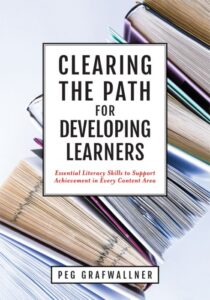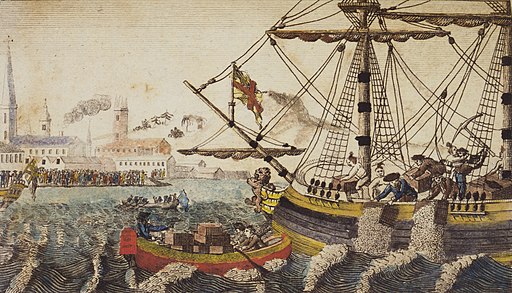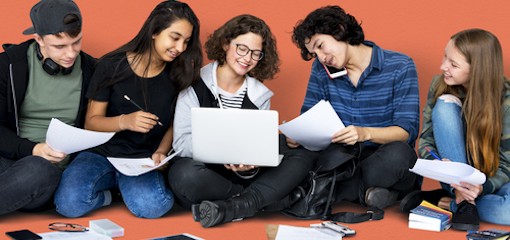Embed These 7 Skills to Assure Comprehension
By Peg Grafwallner

I enjoy partnering with a teacher; determining the academic standard, crafting the vigorous learning intention and scaffolded success, finding inspiring and empowering resources, and finally, designing various assessment opportunities that showcase what the students know and are able to do.
I love helping teachers find text that will stimulate student thinking in powerful and impactful ways. However, none of that matters if the student is unable to comprehend the text. While most middle school students can decode text, truly understanding what they are reading and how those words might impact them or the world around them is the crux of any worthwhile lesson.
According to Reading Rockets, “Comprehension is the reason for reading. If readers can read the words but do not understand or connect to what they are reading, they are not really reading. Good readers are both purposeful and active, and have the skills to absorb what they read, analyze it, and make sense of it, and make it their own.”
All teachers want their students to be able to participate in class discussions, to talk confidently and with conviction about a topic, and to share their insights and perceptions about that topic. But if our students are unable to engage in those discussions due to poor comprehension, we might as well create a class of “sit and get” drones – you sit and I’ll get you the information.
In my new book, Clearing the Path for Developing Learners: Essential Literacy Skills to Support Achievement in Every Content Area, I focus on the seven essential literacy skills necessary to support our students when comprehending complex texts they are expected to read. Without the skills they need to tackle that text, many students will simply not bother to read it, and those who do might struggle through it, eventually giving up out of sheer frustration.
But when teachers take the time to introduce, define and demonstrate how to use the seven essential literacy skills, students are able to apply them to their own reading. They are able to break down those complex phrases and inferences to make meaning.
Building comprehension through building skills
As an instructional coach at a large urban school, I wanted teachers to utilize skill-building in their classes. After all, we know that nearly all standardized tests focus on literacy skills. We also know that if students cannot comprehend those tests, their scores (and perhaps their academic future) will suffer.
If you review the literacy skills needed to be successful on any state test, you will see skills like “determine a central idea,” “locate relevant details,” “inference,” “summarize,” “determine the meanings of words,” “compare and contrast, “ “evaluate the development of an argument” and so on. Using similar language from two sources (Common Core and the Wisconsin State Standards), here is the list of the skills our students needed to be successful:
1. Locate the Main Idea and Identify Supporting Details
2. Compose a Summary
3. Interpret and Apply Academic Vocabulary
4. Identify and Apply Inference
5. Identify and Understand Cause-Effect Relationships
6. Identify and Understand Relationships Using Compare and Contrast
7. Delineate and Evaluate Arguments
At my urban school, I shared these skills with the faculty and determined our next step was to integrate these skills into our vigorous learning intentions and scaffolded success criteria. In embedding these skills into what teachers were already teaching, the skills did not become “one more thing” that a teacher had to worry about.
As an example, let’s say I’m a sixth grade science teacher. I know my students can be easily swayed by what they hear and see on social media. As a result, I want to create a lesson that focuses on the differences among superstition, pseudoscience, and science. I want my students to be critical consumers of information and not get swallowed by the “they saids” of the world.
Skill building at work in science and history
As a result, my vigorous learning intention (I use the word “vigorous” because I want my learning intention to be engaging, empowering, and entertaining) focuses on academic vocabulary – one of the essential literacy skills:
✻ Sixth grade science and technical subjects
Learning Intention: I can learn the differences among superstition, pseudoscience, and science.
Success Criteria: I know I am successful because …
1. I can define superstition, pseudoscience, and science.
2. I can demonstrate the differences using a graphic organizer.
3. I can find real-life examples of superstition, pseudoscience, and science and share them with the class.
If I want to add another essential literacy skill, I could ask students to write a summary of their examples and give it to a peer to read. As you can see, my content is a vehicle for the skills. I do not have to create a lesson just to apply the skills.
Let’s try another example. I am an eighth grade history teacher and my goal is to have my students learn about the events leading to the American Revolution and how those events influenced the formation of the Constitution. However, that is simply too much for a learning intention. As a result, I’m going to split my goal and begin with this vigorous learning intention:
✻ Eighth grade U.S. history, part 1
Learning Intention: I can find the causes and the effects of the events that led to the American Revolution and explain them to a peer.
Success Criteria: I know I am successful because…
1. I can research the causes of the American Revolution.
2. I can find out the effects of those causes.
3. I can create a timeline of the causes and the effects.
4. I can explain those causes and effects to a peer.
W.D. Cooper. “Boston Tea Party.” The History of North America. London: E. Newberry, 1789. Source: Cornischong at lb.wikipedia, Public domain, via Wikimedia Commons.
Now, here’s the second half of my goal; a continuation of what I want my students to know and be able to do:
✻ Eighth grade U.S. history, part 2
Learning Intention: I can show how the causes and effects of the American Revolution influenced the formation of the Constitution and share that information with my peers.
Success Criteria: I know I am successful because…
1. I can review the causes and events that led to the American Revolution.
2. I can show how these events helped to create the Constitution using my graphic organizer.
3. I can share my graphic organizer with my partner.
In this particular example, I broke up my initial learning intention because it was simply too cumbersome. Instead I gave my students time to master the critical events leading to the American Revolution, utilizing the essential skill of cause-effect, and then asked students to show how those events helped to create the Constitution.
You will notice there is no ideal number of success criteria, and the number of success criteria necessary to meet a learning intention is as variable as the possibilities for learning intentions themselves.
Achieving the goal of deeper comprehension
As you continue to write your vigorous learning intentions and scaffolded success criteria using these skills, you will notice your students are able to comprehend the text more explicitly because they may have to reread the text, or use questioning techniques to gather more information, or make inferences.
We want our students to slow down when reading, to fully engage in the material, and to be able to share their perceptions and ideas about what they have read. In other words, we want our students to comprehend text and “make it their own.”
In closing, I recommend you introduce one skill at a time and give students the chance to master that skill – this is not a race to master all seven skills by the end of the academic year. Instead, give your students an opportunity to practice each skill with various pieces of text. As students become more comfortable applying the skills, they will transfer these skills to other texts, comprehending more deeply and with greater confidence and clarity.

Peg is a blogger, author, and international presenter whose topics include coaching, engagement, and inclusion. She is also the author of Ready to Learn: The FRAME Model for Optimizing Student Success; and Not Yet … And That’s Ok: How Productive Struggle Fosters Student Learning.
You can reach Peg at peggrafwallner@gmail.com or follow her on Facebook and Twitter/X. Check out Peg’s website for free resources for all student abilities.






































